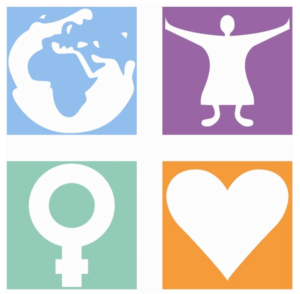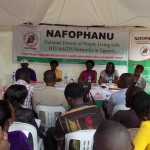Introduction:
The world has seen the deadly pandemic commonly known as COVID-19 (that started in China in Dec
2019) It has spread to almost all countries causing devastating consequences that include alarming
rates of morbidity and mortality, it has affected different geographical locations differently. The
number people getting infected with COVID 19 in Eastern Africa are growing day by day and we are
also registering cases of people who have succumbed to the pandemic.
From the gender lens, the negative impact of COVID 19 has been felt more by women and girls with
has increased cases violence, deepened discrimination, and compromised access to SRH services
among other evils than their male counterparts.
Goal of the Survey
ICWEA carried out a survey that targeted women and young women living with HIV in the Eastern
Africa region to get their experiences during the COVID 19 and how it has directly and indirectly
affected impacted on their lives.
Methodology:
This survey was entirely carried out online using Google Form tool which was developed at ICWEA.
ICWEA developed an online tool which was circulated through the email and social media platforms
to different individuals and stakeholders working with women living with HIV in the Eastern Africa
region
The survey run for a period of one month from May to end of June 2020 and was filled out by a total
of 53 participants who were women and young women living with HIV across all the 5 Eastern
African countries
Demographic Composition:
- Age: Of the 53 respondents, none of the respondents were below 24 years.26.7% were between
25 to 30 years of age.20% were between 31 to 40 years of age 26.7 % were between 41 to 49 years
of age. Furthermore, 26.7% of the respondents were above 50 years. - Marital Status: Of the 53respondents, 63.3% of the respondents were single.23.3% were married
while 13.3% were staying together. - Occupations: Of the 53 respondents, 60% were employed while the rest of the 40% were either
unemployed or retired
Findings of the survey:
HIV Care and Treatment
Considering the HIV care and treatment during the COVID-19 crisis, it was found that majority of the
respondents live with 10 to 20 kms radius from the health center where they receive medication.

The survey further reveals that 90% of the respondents had access to ART care and treatment before
the COVID -19 Pandemic and only 43.3% of the respondents received treatment during the lockdown.
60% of those who received treatment received it from their usual health centers while 40% received it
from either another health Centre or by delivery peers.
Majority of the respondents received treatment for an average of 3 months (76.7%) while a small
fraction received treatment for one month (13.3%)

Over 70% of the respondents had indicated that they received their ART for 3 months, however,
13.3% reported having received the ART for only one (1) months. Respondents also reported that
the main challenge in getting your ARV treatment during the COVID-19 Pandemic was mainly fear of
exposure to coronavirus and fear of stigma and discrimination
Sexual Reproductive Health Services
43.3% of the respondents reported having experienced delays or disruption in their access to the
Sexual reproductive Health services during this COVID-19 Pandemic. Of these, the most popular
challenge was reported to have been experienced in theory was the attempt to access to
contraceptives and STI Diagnosis and treatment
Violence against Women and Girls
Of the 53 respondents, 36.7% of then reported to have experienced violence against women and girls
before the pandemic. Some of the VAW they reported to have experienced included as husbands
beating up wives, forced sexual intercourse, emotional abuse from partners and denial of conjugal
rights among others.
13.7% of the respondent’s experience GBV during the pandemic and 33.3% knew someone who had
experienced any kind of violence during the lockdown.
In addition 53.7% of those who experienced GBV reported that they were not able to seek or get
support after the experience while only 30% got assistance. However 36.7% of the respondents
reported that they did not experience GBV. Those who got support attributed it to the availability
and effectiveness of community justice centers and some civil society organizations.
Food Availability and Basic Needs

Most of the respondents reported that they were able to meet basic needs and food before the
pandemic. After the occurrence of the Covid pandemic,53.3% of the respondents reported to have
encountered disruptions in their routine of access to basic needs and food. The disruptions were
mainly caused by lack of enough financial assistance and reliable sources of income.
Despite the disruptions, some of the respondents received assistance from the government, civil
society organisations, family and friends.
General Recommendations
Respondents made general recommendations about the situation during the COVID-19 pandemic
and these include the following;
More advocacy should be done with the support of media so as to increase awareness
The local administration through organized groups should organize programme to assist women
and girls living with HIV in need
Hygiene packs and food distribution to the most vulnerable populations among women living
with HIV is needed
Establishment of toll-free line for text messages where adolescent girls and young women could
report their cases
The governments should integrate HIV in Covid Response and ensure access to other essential
services line SRHR services for women living with HIV.
Systems and structures should be put in place by government to protect and cater for the needs
of the vulnerable including women and girls ;iving with HIV
Peer support is necessary and therefore, they should make it a habit of checking on each other
all the time
Health authorities need to be cognizant of existing conditions of the women living with HIV even
when other pandemics set in.
Women like mothers suffer because they have to provide for their of children but they lack of
resources as most depend on daily incomes
People must be given food so that they do not starve more especially people living with HIV,
ARVs must be distributed at local level
ICWEA and other AIDS service organizations should solicit for financial support to enable
members buy foods
Women and girls on ARTs should be supported with food
Would like to encourage people to observe food security as a serious issue and those that can-do
farming should take it seriously,
IGA should not stop but people to keep in mind preventive measures and curfew time
Washing hand with water and soap or use sanitizer or alcohol, wear mask and real distance
special attention should be put on women living, with HIV
We kit that can support women for basic needs



